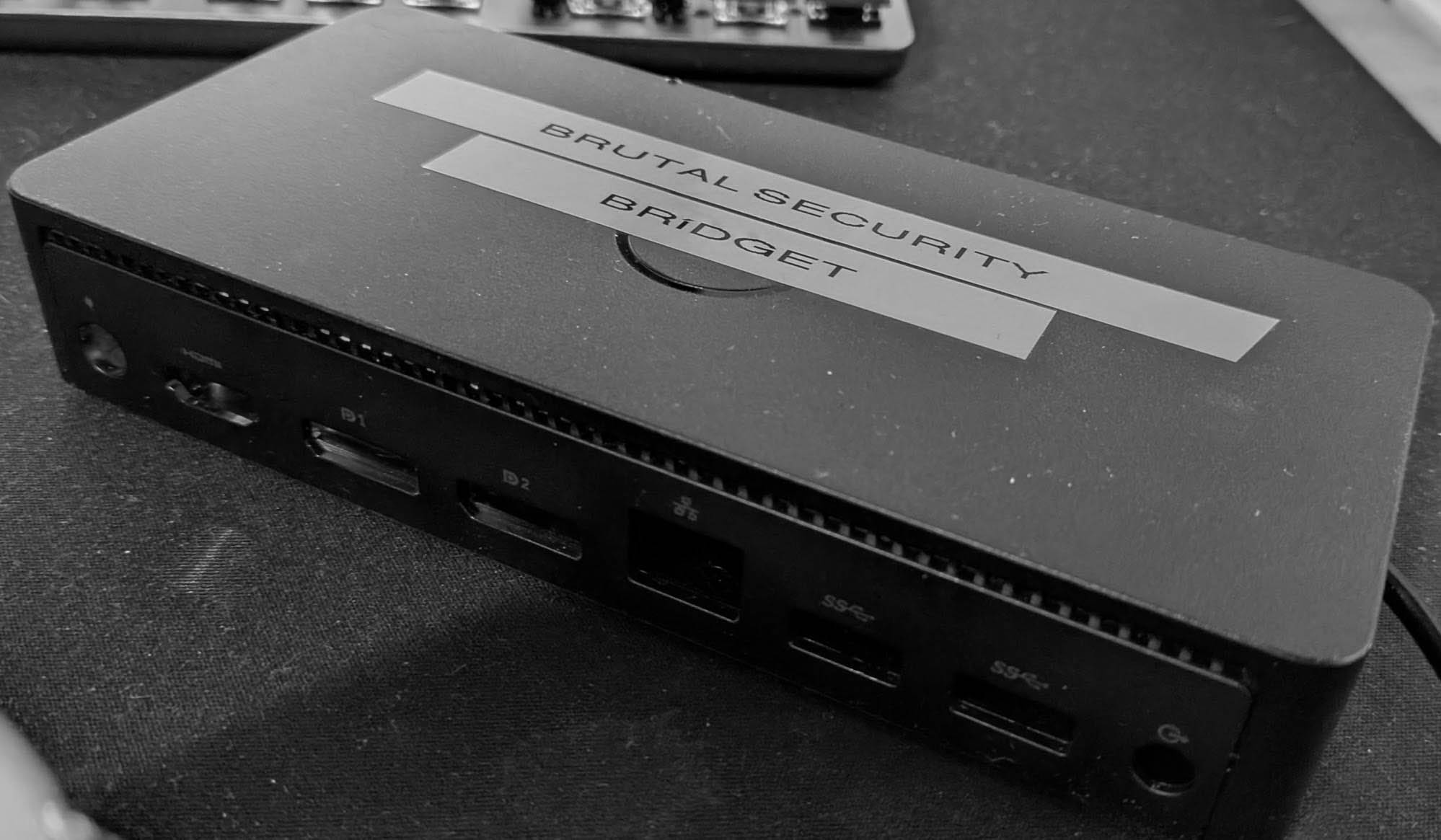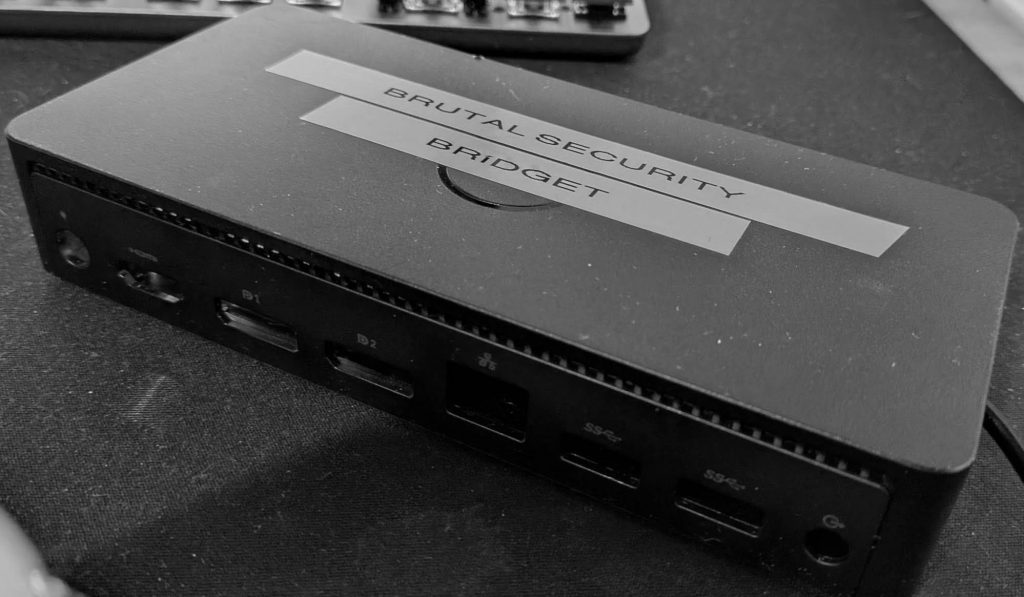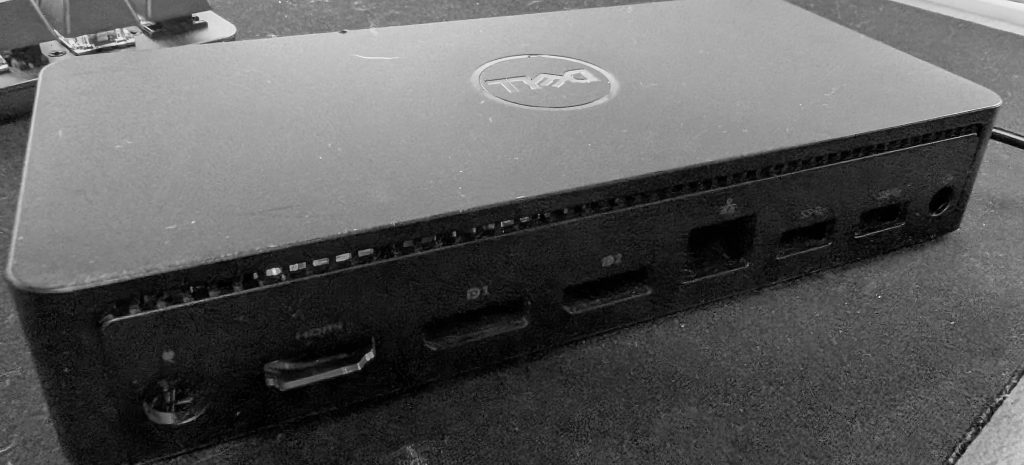
Meet BRIDGET: The Ultimate Covert Network Implant
In the ever-evolving game of cybersecurity, creativity and innovation go hand in hand with vigilance. That’s why we’re thrilled (and slightly terrified) to introduce BRIDGET: a covert network implant ingeniously crafted from a gutted Dell USB-C WD dock. The most popular enterprise docking station just got a new job — and it’s not what you’d expect.
What is BRIDGET?
BRIDGET is a stealthy network implant designed to demonstrate just how vulnerable modern enterprise networks can be without proper testing and safeguards in place. Built on the backbone of the Hackheld Vega II and ESP32 chipset, BRIDGET runs on NODEMCU OS and employs DEAUTHER technology. This covert device blends into any environment by leveraging the common appearance of a Dell USB-C dock — a ubiquitous accessory in corporate settings.




How BRIDGET Was Built
The project started with a standard Dell USB-C WD dock, which we gutted to make room for our hardware. We replaced the internals with a custom construction based on the ESP32 chipset, known for its power and versatility. The resulting setup includes:
Deauther Hardware:
SH1106 1.3” OLED display for monitoring.
GPIO connections for additional sensors or peripherals.
A 3500mAh battery with USB-C connection, overcharge protection, and stop coverage.
A newly integrated SMA antenna connection with a 24dB gain antenna for extended range.
This configuration makes BRIDGET incredibly discreet while packing robust WiFi development and testing capabilities. The USB-C connector powers the device seamlessly from any standard USB port or power brick, allowing it to operate stealthily in almost any environment.
What BRIDGET Can Do
Equipped with the latest ESP8266 Deauther software, BRIDGET is capable of performing a range of WiFi security attacks and tests, including:
Deauthentication Attacks: Disconnect devices from a network by sending deauthentication frames. This exploits the lack of 802.11w-2009 support in many devices, making it devastatingly effective.
Beacon Flooding: Simulate multiple fake WiFi networks to confuse and overwhelm users.
Probe Attacks: Generate requests for specified networks to confuse WiFi trackers.
Packet Monitoring: Display WiFi traffic in real-time for analysis.
With its robust hardware, BRIDGET can operate remotely, making it accessible even from outside a facility’s perimeter. This adds a new layer of complexity to detecting and mitigating such threats.
Why BRIDGET Matters
BRIDGET is more than just a cool tech project; it’s a wake-up call for network security. This device highlights how easily an attacker can infiltrate a secure environment with minimal risk of detection. Here’s why BRIDGET could go unnoticed:
It Looks Familiar: As a modified Dell USB-C dock, it blends seamlessly into an office environment. Who would suspect a dock?
Remote Accessibility: The enhanced antenna and battery allow BRIDGET to be controlled from outside the facility, evading physical inspections.
Stealth Operation: With its ability to simulate legitimate network activity, it’s challenging to identify as a rogue access point.
Setup Time: With the USB-C connection the device is amazingly quick to plug in to a USB power brick in an empty cubical, or a remote employees office, if your IT team is not doing proactive physical building walk throughs as well as practical frequent monitoring and validations you would never know this device is onsite or in a organizations building. Brutal Red Teams have had this device installed and working within 24 seconds from plug in to first initial scans.
Defense Against BRIDGET
So, how do you defend against a device like BRIDGET? Ultimately we build these fun projects with the aspirations of creating SOP’s and practical exercises to detect, stop, capture as much data so we can block these popular implants and tools based off the ESP32 chipset and NODEMCU. It starts with proactive measures:
Regular Pentesting: Penetration testing can help identify vulnerabilities, including rogue access points like BRIDGET.
Access Point Monitoring: Ensure your WiFi infrastructure has robust monitoring tools that can detect unusual activity, such as beacon flooding or deauth attacks.
Device Placement: Position access points strategically to minimize blind spots where rogue devices can hide.
Invest in 802.11w-2009 Standard Devices: Upgrading your network equipment can mitigate deauthentication attacks. (“802.11w-2009” refers to an IEEE standard called “Protected Management Frames (PMF)” which aims to enhance the security of wireless networks by protecting management frames like deauthentication and disassociation packets from being forged or replayed by malicious actors, essentially safeguarding against denial-of-service attacks on Wi-Fi networks; it’s considered a crucial security feature for robust wireless connectivity.)
Employee Awareness: Train staff to recognize and report unfamiliar hardware, even if it looks like standard equipment.
Physical Assessments: Often overlooked by IT teams, physical assessments are crucial for identifying rogue devices like BRIDGET. Regular on-site walkthroughs should include someone knowledgeable in network implants, integrated into the organization’s Emergency Response Team or Safety Committee. These “eyeballs-on-site” inspections not only identify security gaps but also uncover opportunities for infrastructure, organizational, and procedural improvements.
BRIDGET: A Name That Means Business
BRIDGET stands for Brutal Radio Interception and Deauth Gateway Execution Tool
The total cost for this device was less then $100 dollars. A lot of the parts we needed were either something we had just laying in a bin. The only purchase we made with the ESP32 board which was $33 shipped to my door. Took us about 3 hours to get it put together to trying it in the wild. Brutal Security offers custom implant services for many of our customers and are always up for a fun challenge. Please reach out if you would like to collaborate on a project.
The Bigger Picture – Obfuscation is sometimes all you need
BRIDGET underscores the importance of staying ahead in the cybersecurity race. While this device was created as a demonstration tool, the reality is that similar threats already exist in the wild. Without proper defenses, even the most secure networks can fall victim to these covert attacks. This was an easy build, anyone could put this together with very little know how. Sometimes obfuscation is all you need. Hiding this device essentially in another dummy device that looks and seemingly seems fine to be in the office is going to be passed over 9 out of 10 times. In an large office or manufacturing plant this would be like a needle in a haystack.
Final Thoughts
BRIDGET might be small and covert, but it delivers a loud message: network security requires constant vigilance and innovation. This project is both a cautionary tale and a call to action for organizations to take their defenses to the next level.
So, the next time you see a Dell dock, ask yourself—is it just a dock, or is it something more? Because with BRIDGET in play, you might never know.
Stay Brutal,
-EL-LOBO

